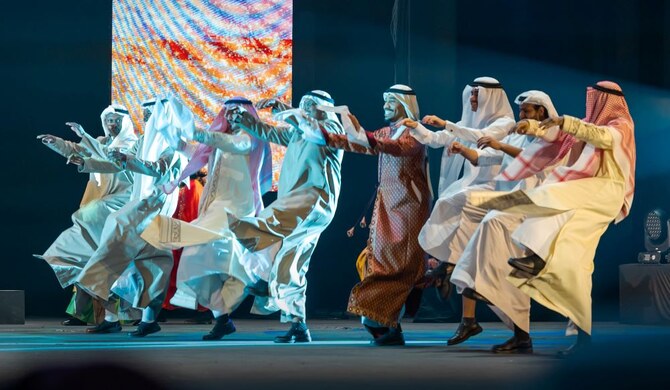DUBAI: Filipino chef Jovani Manalo’s culinary career began straight out of college, when he got a job as a kitchen steward. It was a call from a friend asking him if he was interested in working abroad that changed his trajectory. He jumped at the opportunity, and within a week he was in Dubai.
“I’ve moved around in Chinese, Korean, Italian restaurants, and even Latin American and Mexican restaurants,” Manalo tells Arab News. But it was his move to 3Fils at Dubai’s Jumeirah Fishing Harbor five years into his Dubai adventure that was the most significant. “It was a deep moment when I found my place in 3Fils,” he says.
The restaurant topped the World 50 Best MENA list in 2022 and remains in its top 10. It was also awarded a Bib Gourmand by Michelin this year.
Manalo’s favorite thing about working there, he says, is the “contagious positive mood” of the place.
When you started out, what was the most common mistake you made?
I think everyone would say that at the beginning of their career, they weren’t sharpening their knives enough.
What’s your top tip for amateur chefs?
Take your time. The more you rush things, the less likely you are to succeed. Cooking should be considered a form of therapy; you can do it to relax. Take a step back and enjoy the whole process.
What one ingredient can instantly improve any dish?
Any umami ingredient. It binds all the flavors together without missing a note.
When you go out to eat, do you find yourself critiquing the food?
Not really. I don't think that way. Every time I go out to eat, I take it as a chance to reimagine and understand a dish’s components — think of different ways to innovate it, and try to get the maximum potential out of it.
And when you go out to eat, what’s your favorite cuisine?
It doesn’t matter what you’re eating or where, it’s all about who you’re eating with.
What’s the most common mistake you find with other restaurants?
Not pricing items reasonably. That makes them lose potential customers.
What’s your go-to dish if you have to cook something quickly at home?
And random vegetables stir-fried. I use this to educate my kid on how important veggies are to his diet.
What customer behavior most annoys you?
When they run away without paying.
What’s your favorite dish to cook?
I love making Ginataang Pagi, a Filipino coconut and stingray curry dish. This dish allows me to represent my roots, and it reminds me of family gatherings.
As a head chef, what are you like? Are you a disciplinarian? Do you shout a lot? Or are you more laid back?
I’d say I'm composed. Composure is essential if you want to create a positive environment for your team. Yelling is not acceptable or practical nowadays. Inspiring people to understand their roles and how they can excel is essential, especially in the kitchen, where we really do need to be a team.
Chef Jovani’s Sna’atar recipe

Chef Jovani’s Sna’atar. (Supplied)
For the za’atar spice mix
INGREDIENTS: 50g za’atar powder; 50g lemon salt, 7.5g Shio Kombu powder; 5g sumac powder
INSTRUCTIONS: Place all ingredients in a dry bowl. Mix well. Transfer to airtight container. Set aside.
For the za’atar dressing
INGREDIENTS: 50g za’atar powder; 180g extra virgin olive oil; 120g rice vinaigrette; 10g Maldon salt; 100g lime juice; 7g sumac powder
INSTRUCTIONS: Whisk all ingredients in a bowl until completely combined (ensure the Maldon salt is dissolved). Transfer to a squeezy bottle. Set aside.
For the pea shoot oil
INGREDIENTS: 50g pea shoots; 200g soybean oil
INSTRUCTIONS:
1. Blanch pea shoots for 30 seconds. Strain and immediately submerge in ice.
2. Squeeze the blanched pea shoots dry.
3. Place the pea shoots in a blender. Add the soybean oil. Blend for 2 mins.
4. Strain (but don’t press) the mixture into a piping bag. Set aside.
For the final dish
INGREDIENTS: 50g tai snapper, skinned and sliced; 1 pinch of za’atar spice mix; 10g za’atar dressing; 2g pea shoot oil; 2pcs edible flowers; 3pcs pea shoots; tomato powder.
INSTRUCTIONS:
1. Place the tai snapper slices on a serving plate, spread out into a single layer.
2. Season with the za’atar spice mix.
3. Drizzle with the za’atar dressing.
4. Add a dash of pea shoot oil.
5. Garnish with fresh pea shoots and edible flowers.
6. Finish with a dust of tomato powder.
7. Serve chilled.
























